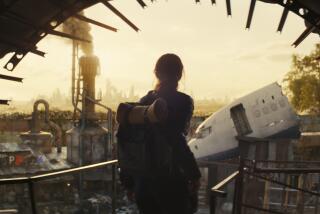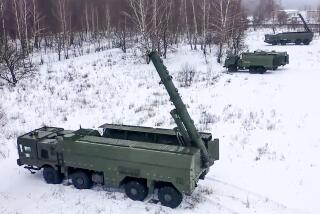Clueless About Nuclear Holocaust
- Share via
On Buddha’s birthday in 1998, there was national jubilation when India conducted nuclear tests. Hindu extremists suggested that the radioactive desert sands in which the tests had been conducted be distributed across the nation. And now, in New Delhi think tanks, scholars discuss the ready prospects of controlling the nuclear escalatory ladder in a “limited” conventional war with Pakistan. They feel confident that the U.S. will disarm Pakistan.
In Pakistan, meanwhile, frivolous talk about an “Islamic” bomb is bandied about in a country housing thousands of committed Islamist extremists. Pakistanis appear sanguine; some are pictured dancing in the embrace of a missile replica. In lieu of new ministries, hospitals or schools, cities are littered with sleek models of Shaheen and Ghauri missiles.
In both India and Pakistan, there is virtually no nuclear fear. People seem to think of nuclear weapons as no more than larger tanks or bigger bombs. And in both countries, there is strong public support for war.
These people don’t have a clue about what nuclear war means. Those in the West who want to move the two governments away from nuclear escalation must, in addition, let the Indian and Pakistani people know in graphic detail what a nuclear war would do.
For starters, U.S. intelligence sources estimate that up to 12 million people could die almost immediately in a nuclear exchange in South Asia. Then would come the radioactive contamination, famine and disease.
This is a region where, by international standards, peacetime levels of suffering--from disease, AIDS, poverty and domestic and public violence--are painfully high. Urban hospitals would not be able to deal with the aftereffects of catastrophe. By sharing information, experience and expertise, concerned countries and groups should try to let ordinary Indians and Pakistanis know the true nature of a nuclear holocaust. And they should seek to build up civil society groups, including doctors, teachers, scientists and retired military officers who oppose the spread of nuclear weapons.
As the U.S. and other international donors identify ways to aid and assist the region, educating South Asians on the true, long-term agony of dying by nuclear fallout and radiation should be near the top of the agenda. There are Japanese groups that can share experiences of Hiroshima and Nagasaki; they already run small model programs. There are groups in the U.S. and Europe with experience in helping their communities grapple with the dangers of nuclear weapons.
And in South Asia, there is a small but active peace education movement. Members of the movement run small-scale projects--videos, films, essay competitions in schools--but they have neither the funds nor the staff to carry out broader nuclear education. Expanding their work will not be a quick fix, but it is vital.
Not just governments, but international civil society must be engaged in averting this threat. The nascent antinuclear constituencies in the region need greater exposure. Give the peace movements a chance. South Asian’s citizens have a right to know the true terror contained in the decisions their governments are making.
More to Read
Sign up for Essential California
The most important California stories and recommendations in your inbox every morning.
You may occasionally receive promotional content from the Los Angeles Times.










